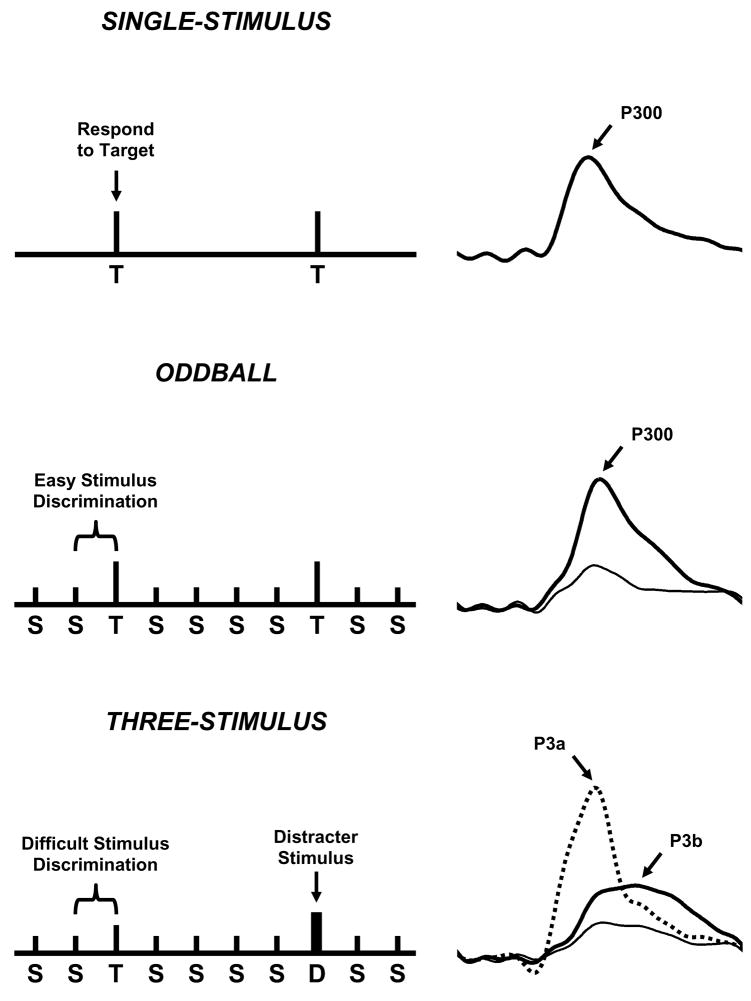Figure 1.
Schematic illustration of the single-stimulus (top), oddball (middle), and three-stimulus (bottom) paradigms, with the elicited ERPs from the stimuli of each task at the right (Polich and Criado, 2006). The single-stimulus task presents an infrequent target (T) in the absence of any other stimuli. The oddball task presents two different stimuli in a random sequence, with one occurring less frequently than the other does (target=T, standard=S). The three-stimulus task is similar to the oddball with a compelling distracter (D) stimulus that occurs infrequently. In each task, the subject is instructed to respond only to the target and otherwise to refrain from responding. The distracter elicits a P3a, and target elicits a P3b (P300). Reprinted with permission of the authors and from Elsevier (Copyright 2006)

